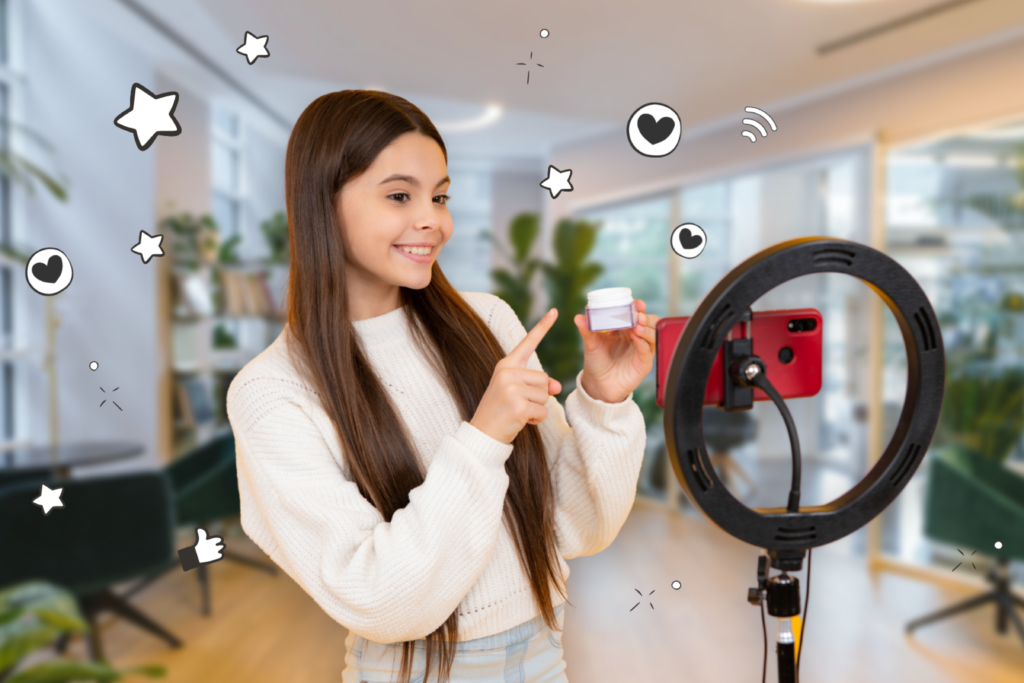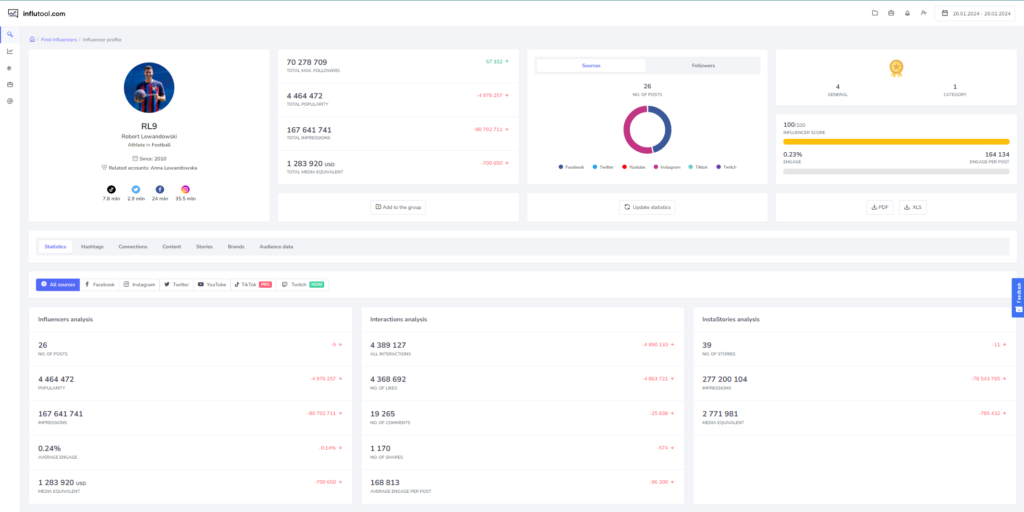Why is Influencer Engagement Rate so important?
Understanding the level of engagement among influencer’s followers provides valuable insights. In a crowded space with lots of posts, only influencers who are good at making engaging content get regular responses and feedback from their followers. Influencer’s Engagement Rate isn’t just a one-time thing, as it shows if the influencers create content that consistently gets a lot of interaction.
While looking for influencers for your campaign, you might have a long list of people to choose from. To find the top influencers, check out their likes, comments, and give their posts a thorough look. This way, you’ll pick influencers who can truly boost your campaign’s impact.
Influencer engagement serves as a crucial metric, giving a holistic view of their performance and the potential impact on your brand. Marketers say that clicks and engagement are the most important things when picking influencers.
If an influencer has high engagement, it means they’re more likely to help your brand grow and bring good results. What is especially important are the clicks, because they show how many people are interested enough to check out your store or website.
To know if a creator is a good fit for your brand, you need to look at all the statistics. Influencers who get a lot of likes and clicks are more likely to help your brand. Additionally, clicks represent a vital form of engagement closely linked to driving conversions. For instance, in an Instagram Story campaign, it’s crucial to measure not just likes and views but also the number of clicks on the link directing users to your store.
Influencers with lots of likes and clicks have a higher chance of contributing to your brand’s success. And remember, clicks are a key type of engagement that can lead to conversions. For example, in an Instagram Story campaign, it’s important to track not just likes and views, but also the number of clicks on the link that takes users to your store.
How to check Influencer Engagement Rate?
You may check Influencer Engagement Rate in a few different ways. The first one is simple and involves using one of the available Influencer Marketing tools, eg. influTool, Modash or HypeAuditor.
Source: influtool.com
Your second option is to find an ER online calculator. Many of them are available for free and will let you calculate it with no insights needed.
You can also simply ask influencers for their insights that will provide you with the following numbers: followers and interactions.
To calculate Engagement Rate on your own, you need to divide the number of average interactions under the publication (for Instagram – likes and comments) by the number of the accounts they are followed by and multiply the result by 100 to get the percentage. However, this one may be the least precise as every publication gains different results. This will be a good way if you don’t need the exact number but just the average to understand if the influencer is worth collaborating with.
Engagement Rate vs social media platforms
It’s important to remember that Engagement Rate may vary a lot, depending on the social media platform itself.
For instance, YouTube is the platform where the majority of users do not interact with the creator’s content. It may be because many people watch YouTube on big screens, TVs, or laptops, often just listening to it, as they play it somewhere in the background while doing something else.
In contrast, TikTok, as the fastest-growing Social Media platform, usually results in the highest Engagement Rate. Liking and/or commenting on TikTok is easier and faster and users are more anonymous which makes them more eager to engage with content.
 Engagement Rate vs Social Media platforms; Source: influencerrmarketinghub.com
Engagement Rate vs Social Media platforms; Source: influencerrmarketinghub.com
Influencer Engagement Rate vs the size of the profile
Last but not least it is worth mentioning that Influencer Engagement Rates differ depending on the size of the creator’s profile. According to their sizes, we distinguish four influencer groups:
- Nano-influencers
- Micro-influencers
- Macro-influencers
- Mega-influencers
Nano-influencers and micro-influencers usually have more interactions but lower reach (and fewer followers) than macro-influencers and mega-influencers who have fewer interactions and higher reach (and more followers). This results in a lower engagement rate in the end.
The following chart presents the average percentage of engagement rate depending on the size of the profile presented on specific Social Media platforms.
Influencer Engagement Rate vs the size of the profile; Source: shopify.com
When do you know whether the Engagement Rate is good or not?
For influencers with a medium to large audience, an engagement rate of 3% or more is considered good. Typically, influencers fall within the 1% to 3% range, so anything exceeding 3% is above average.
It’s important to remember that the percentage of the Influencer Engagement Rate will differ on every platform. Low numbers on one platform don’t mean that the same value will be considered a poor result on another. For instance, as mentioned above -,YouTube or X are platforms where the Engagement Rate tends to be lower. Even at 1%, it’s already perceived as high.
So is Influencer Engagement Rate the most important factor?
The answer is not going to be “yes” or “no”. It is, clearly, a very important factor if you think of hiring influencers to promote your brand. However, this should not be the first aspect you check while doing research. It is important to remember that influencers are more than just numbers and should never be reduced to just statistics.
If you want to collaborate with influencers, don’t forget to verify their content first and check if their profile fits your product’s or brand’s message. A high Engagement Rate may be your enemy if you choose an influencer that doesn’t fit your needs at all or if you pick someone who claims to use your competitor’s product. Remember that to succeed, everything needs to come together.
For more Influencer Marketing content, follow our LinkedIn page and stay up to date!








